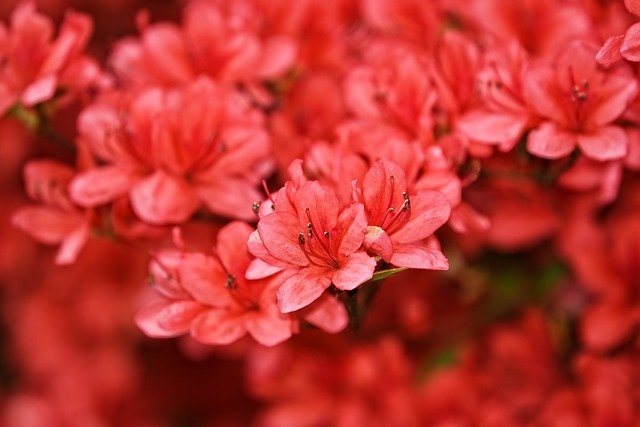Which Plants Are Safe, Dangerous, or Deadly for Pets?

Gardening can be a fun and relaxing hobby, and many people garden in areas that are easily accessible to their pets. Because of this, it is good to know which plants are considered safe and which can be dangerous should your cat or dog get into mischief in the garden by digging up, chewing or eating the plants.
* Please note that these lists are not all-inclusive, but include frequently encountered plants. Also, be advised that any plant material consumed may cause gastrointestinal upset (vomiting and/or diarrhea).
Poisonous Plants
These plants can potentially cause serious bodily damage or fatality if chewed or eaten. This list is more specific, and includes symptoms that may occur if your pet eats or chews these plants.
Autumn Crocus. Toxic to: dogs, cats, horses Symptoms: bloody vomiting, diarrhea, liver damage, kidney damage, shock, respiratory failure, and death.
Azalea. Toxic to dogs, cats, horses. Symptoms: vomiting (cats and dogs), drooling, diarrhea, weakness, heart failure, and death
Castor Bean. Toxic to dogs, cats, horses. Symptoms: mouth and throat irritation, excessive thirst, vomiting (cats and dogs), diarrhea, drooling, weakness, kidney failure, convulsions, loss of appetite, fever, dehydration, seizures, coma, and death.
Cyclamen. Toxic to dogs, cats, horses. Symptoms: Drooling, vomiting, diarrhea, heart arrhythmias, and death.
Daffodil. Toxic to dogs, cats, horses. Symptoms: vomiting, drooling, diarrhea, convulsions, low blood pressure, heart arrhythmias, and death.
Foxglove. Toxic to dogs, cats, horses. Symptoms: heart arrhythmias, vomiting, diarrhea, weakness, heart failure, and death.
Kalanchoe. Toxic to dogs and cats. Symptoms: vomiting, diarrhea, and heart arrhythmias.
Oleander. Toxic to dogs, cats, horses. Symptoms: severe vomiting, drooling, abdominal pain, diarrhea, decreased heart rate, hypothermia, and death.
Sago Palm. Toxic to dogs, cats, and horses. Symptoms: vomiting, bloody diarrhea, liver failure, seizures, excessive thirst, bruising, and death.
A note about lilies:
Lilies differ in levels of toxicity. True lilies are the most dangerous, and are potentially fatal to cats.
True lilies include: Tiger lily, Day lily, Asiatic lily, Easter lily and Japanese Show lilies. Symptoms: Vomiting, loss of appetite, lethargy, kidney failure, and death.
Other lilies are less toxic, but still dangerous, to both cats and dogs. These include Peace lilies, Peruvian lilies and Calla lilies. Symptoms include oral irritation and drooling.
Toxic Plants
These plants will cause stomach upset, and/or irritation to the mouth if eaten or chewed. However, they will typically not cause serious illness.
- Aloe
- Dumb Cane
- Mother-in-law’s Tongue
- Begonia
- Elephant Ear
- Pansy
- Bird of Paradise
- Fleabane
- Peace Lily
- Bougainvillea
- Gardenia
- Pinks (Dianthus)
- Calla Lily
- Geranium
- Plumbago
- Carnation
- Hibiscus
- Poinsetta
- Chrysanthemum
- Hydrangea
- Primrose
- Coleus
- Iris
- Cosmos
- Kalanchoe
Safe Plants
These plants will typically not cause illness or oral discomfort if eaten or chewed.
- Alyssum
- Echevaria Succulents
- Polkadot Plant
- Blue Daisy
- Gerber Daisy
- Rose
- Boston Fern
- Gloxinia
- Snap Dragon
- Bottlebrush Tree
- Impatiens
- Spider Plant
- Camellia
- Marigold
- Star Jasmine
- Canna
- Nasturtium
- Sunflower
- Celosia Plumosa
- Pampas Grass
- Sword Fern
- Christmas Cactus
- Persian Violet
- Viola
- Coreopsis
- Petunia
- Zinnia
More Information on Dangerous Plants for Cats and Dogs
The ASPCA has a large database online of poisonous and non-toxic plants and pictures at http://www.aspca.org/pet-care/animal-poison-control/
If you think your animal has ingested a poisonous plant or substance contact ASPCA Animal Poison Control Center 24hr hotline at (888)426-4435.

